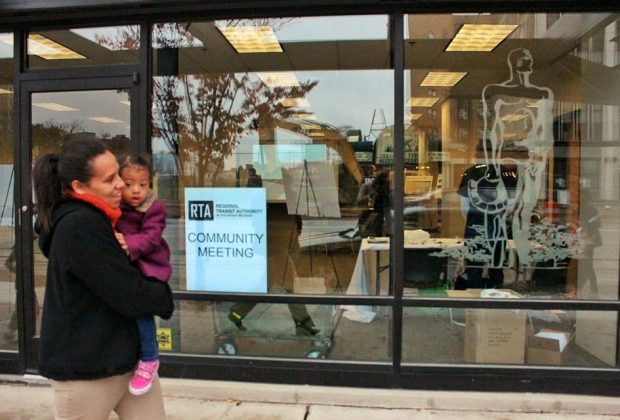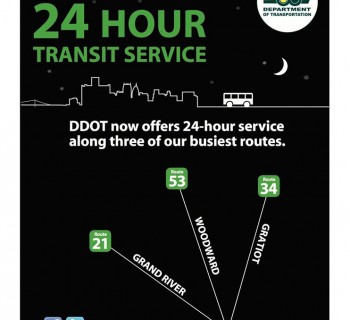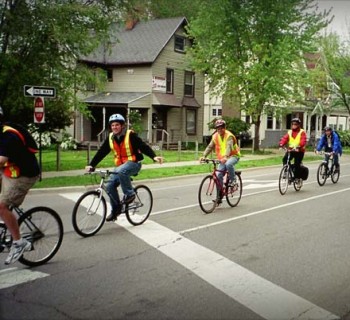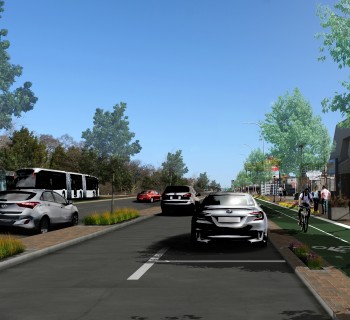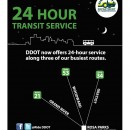UPDATE:
Aug. 1, 2016: During a July 28 meeting of Southeast Michigan's RTA Board, officials from Oakland and Macomb Counties blocked a measure that would have put a millage to fund the agency's regional transit plan on the November ballot. Oakland County Executive L.
Brooks Patterson and Macomb County Executive Mark Hackel have raised concerns that taxpayers in their regions would not get their fair share of benefits from the plan. In order to still get the measure on the ballot this fall, members of the RTA Board would need to reach an acceptable compromise before an August 16 ballot language approval deadline.
--
Metro Detroit is notorious for having one of the worst transit systems in the nation, but a new development might just be offering the region a ticket to a more functional transit future.
Back in May, Southeast Michigan's Regional Transit Authority (RTA) finally released a draft of its long-awaited regional transportation Master Plan. Billed as a way to bring “rapid, reliable, regional transit" to Macomb, Oakland, Washtenaw and Wayne Counties, it sketches out a vision to coordinate and improve transportation services in the region.
The RTA wrapped up a series of public meetings to get community feedback on the draft on June 30. Now the proposal will be revamped and submitted to the RTA Board.
Should they give it their okay — which they are almost guaranteed to do — voters in the four-county region will likely be asked to consider a 1.2 mill, 20-year property tax this November to fund implementation.
What's the plan?
So what exactly is this proposed transportation Master Plan — which will cost an estimated $4.6 billion to implement — supposed to do? Essentially it provides for the creation of new transit lines to make travel easier between counties, while also linking up and upgrading services by existing transit providers to make them more effective.
While Bus Rapid Transit (BRT) has been on the drawing board for Woodward Avenue for some time, the RTA plan proposes building similar lines along Gratiot, Michigan, and Washtenaw Avenues corridors too.
BRT lines are high-speed bus routes that rely on designated bus lanes, routes with fewer stops and special signal technology that gives buses priority at stoplights to get riders to their destinations quicker.
The RTA's Master Plan also calls for a new regional rail line between Detroit and Ann Arbor. It would offer eight daily trips in each direction, and feature stops in Ann Arbor, Ypsilanti, Wayne, Dearborn and Detroit's New Center Amtrak station.
In addition to this, the document outlines strategies to strengthen collaboration efforts of existing providers like DDOT, SMART, AAATA and Detroit's People Mover, while also incorporating the new QLINE (M-1 Rail) streetcar system that is set to open in Detroit in 2024.
To start with, it provides a framework for better coordination between Detroit's DDOT and the suburban SMART bus systems in the near future and the establishment of temporary regional express routes on Michigan and Washtenaw prior to the launch of BRT on those corridors.
Permanent commuter express routes are also pla nned for during peak hours between Ann Arbor and Livonia, Ann Arbor and Canton and along I-75 and all-day along M-59. Airport Express routes that linking Metro Airport with Ann Arbor, Detroit and Macomb and Oakland Counties would also be part of the framework.
The Master Plan would also create a network of Cross County Connector routes to allow for rapid travel between counties on major corridors.
Beyond this, the RTA's vision also includes: new and upgraded maintenance and transit facilities; a regional fare card that would allow for seamless transfer between providers; expanded paratransit options (including access to on-demand services); and the implementation of a one call/one click call center that will help anyone in the region plan rides with both public and private transit providers.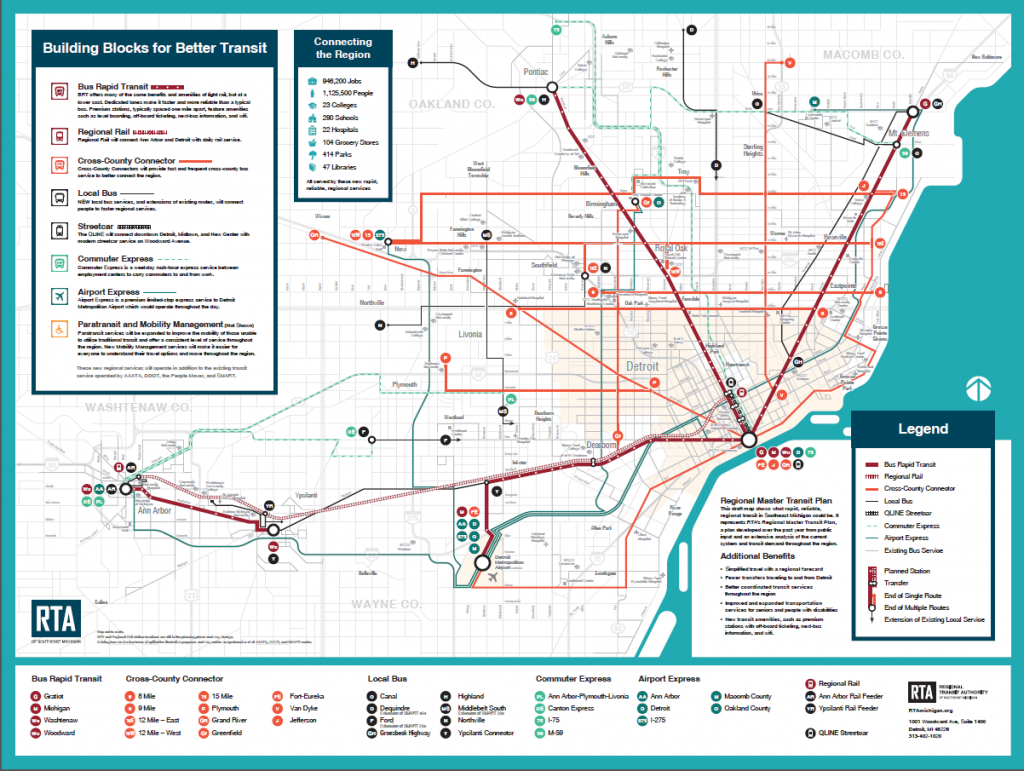
The road forward
By the RTA's reckoning, their master plan would help connect the region's 4.2 million residents (including those who do not use personal motorized transportation anyways) with 1.9 million area jobs and other important destinations like hospitals, educational institutions, grocery stores and libraries. The authority estimates implementing it would also support creation of 67,844 new jobs in Southeast Michigan over the next two decades.
While the vision presented in the document is definitely ambitious, it is certainly not free. As mentioned earlier, voters in the four-county region will likely be voting on a 20-year, 1.2 mill property tax to fund the endeavor this fall. The millage tallies up to about $95 per year or a little under $8 per month for the average homeowner, according to the RTA's estimates.
As can be expected with any plan of this magnitude, dealing with the politically contentious issue of transportation, the Master Plan has its supporters and detractors.
In a statement shortly after its release, the transit-advocacy group Transportation Riders United embraced the document as "a big plan that can make huge strides in addressing our region’s transit needs." That said, TRU has also acknowledged it is not a "silver bullet" for all the region's transit issues.
"Some jobs would still be inaccessible by transit and others would still take a long time," the group said in a second statement. "But many people would easier, faster, more reliable trips to work on transit, which could make all the difference in the world [to them]."
On the other side of the aisle, the plan is facing some pushback from some conservative rural parts of the region.
On June 13, the village council of Leonard, an Oakland County community northwest of Romeo, passed a resolution opposing the document. Their motion asserts that the RTA Master Plan "only benefits a few select communities in Oakland County." Village President Mike McDonald told The Oxford Leader that it's a "well-intentioned" but poorly conceived" proposal and doesn't "have enough precise goals to make it worth voting for." The nearby township of Oxford is also working on a similar resolution.
It's also worth noting that the plan has yet to enjoy unanimous support from regional leaders.
While the plan has been embraced Detroit Mayor Mike Duggan, Wayne County Executive Warren Evans and Washtenaw County Commissioner Conan Smith, County Execs L. Brooks Patterson of Oakland and Mark Hackel of Macomb have maintained a neutral position on the matter, preferring to let voters make up their own minds.


